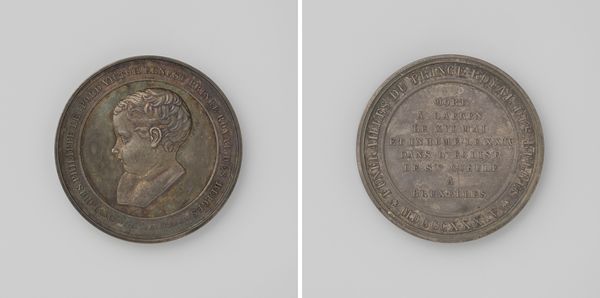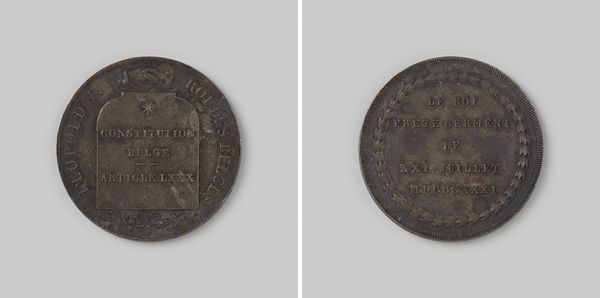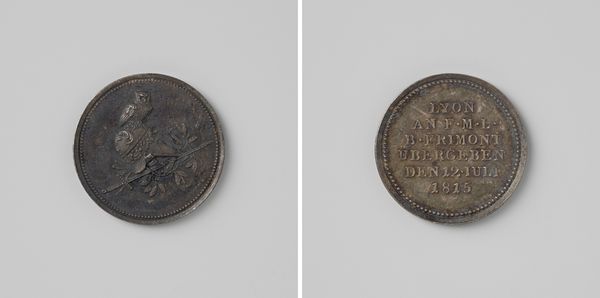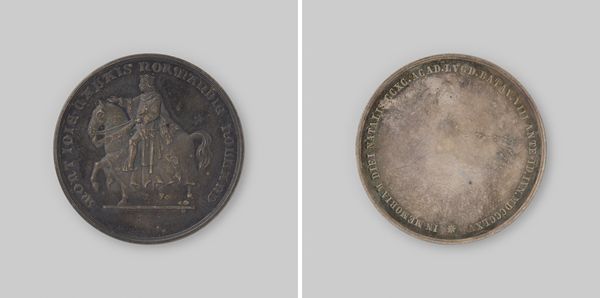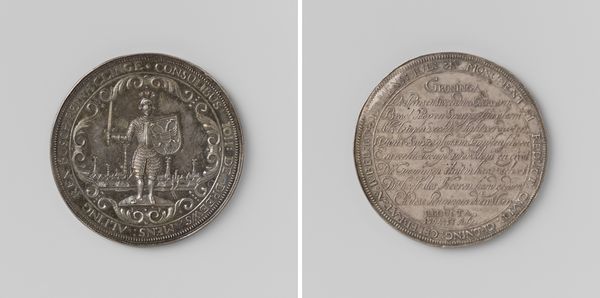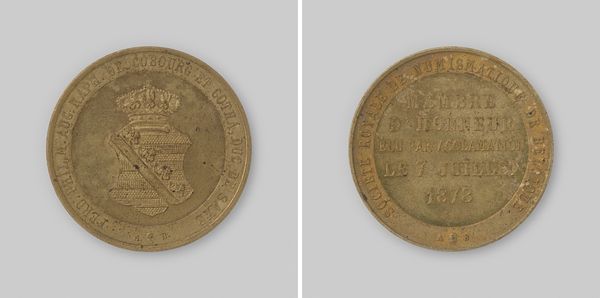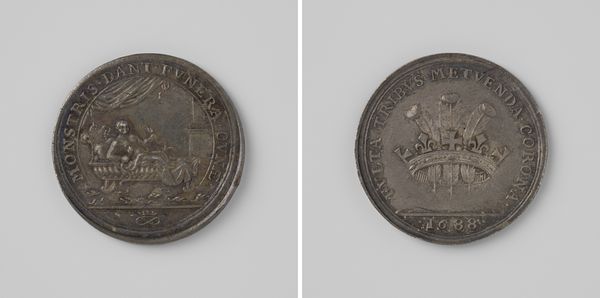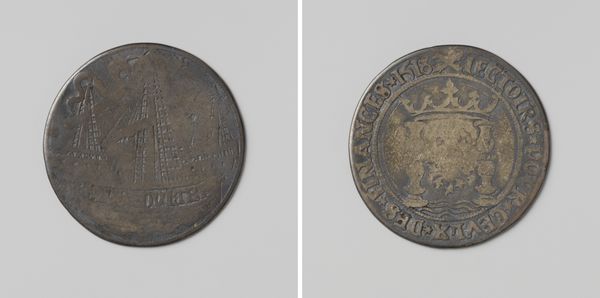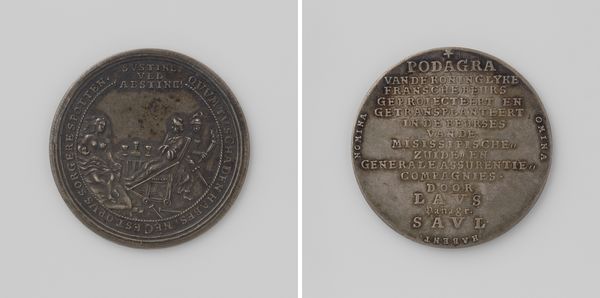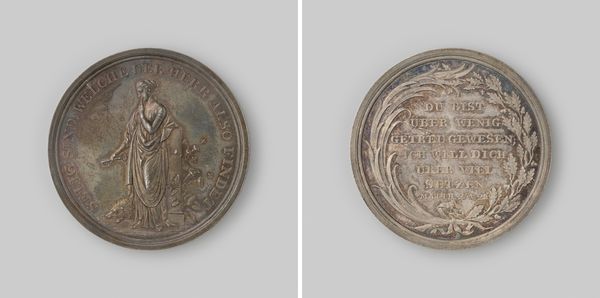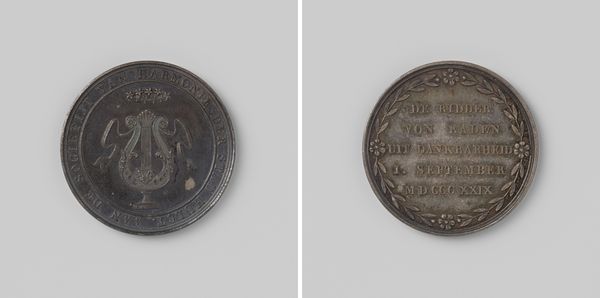
metal, sculpture
#
medal
#
baroque
#
metal
#
sculpture
#
sculpture
#
history-painting
Dimensions: diameter 2.8 cm, weight 6.98 gr
Copyright: Rijks Museum: Open Domain
Curator: This metalwork, a commemorative medal from 1748 by Gerrit Marshoorn, celebrates "Eerste eeuwfeest van de vrede van Munster" - the first centennial of the Peace of Munster. It is designed in a distinctive baroque style. What catches your eye about it? Editor: My initial impression is quite somber, perhaps it is the limited tonal range or the scale; the monumentality the artist aims for feels constrained within this small format. The lines of text act as another, very firm frame. Curator: Indeed, it carries a weightiness despite its size. The central image presents a symbolic monument beneath a radiating divine eye. Such all-seeing eyes can signify vigilance or divine providence watching over events and promises, but here its presence feels somewhat detached from the monument it shines upon. What do you read in the relationship between these iconic components? Editor: I see how that visual link between the monument and eye offers multiple semiotic registers, perhaps suggesting the omnipresence of peace itself, watching and governing society? That monument, with its simplified and stacked elements, seems burdened somehow, less an exultant statement than a stoic marker. Curator: That resonates. Consider also, that the Peace of Munster ended the Eighty Years' War, formalizing Dutch independence. To see this landmark event remembered a century later, still filtered through subdued imagery, indicates enduring, deeply imprinted significance—a moment that continues to reverberate through cultural memory. The monument form itself acts as a microcosm of accumulated Dutch identity, now protected and observed by providence. Editor: It's curious how this relatively straightforward representation accrues so much conceptual baggage once we consider the layers of context—the weight of history made manifest in a seemingly modest object. And what strikes me most is the material: cold, hard metal perfectly expressing solemn remembrance. Curator: Yes, the coldness in material and visual depiction adds depth to its cultural expression. We see an instance in which political and cultural identities meld with the semiotic potential within a particular moment in the history of metalwork design. Editor: Absolutely; seeing how intrinsic qualities elevate cultural meaning allows me a greater understanding and appreciation of this piece. Curator: I agree, considering how it encapsulates Dutch hopes, but also persistent awareness.
Comments
No comments
Be the first to comment and join the conversation on the ultimate creative platform.
